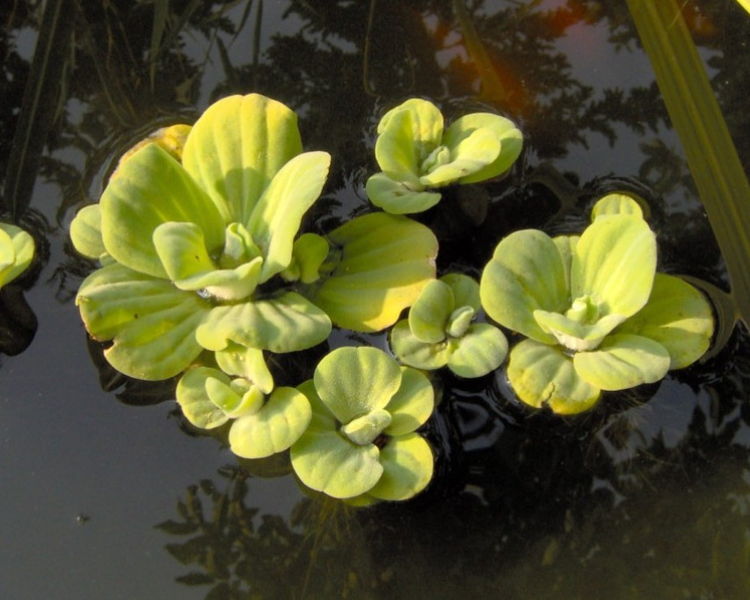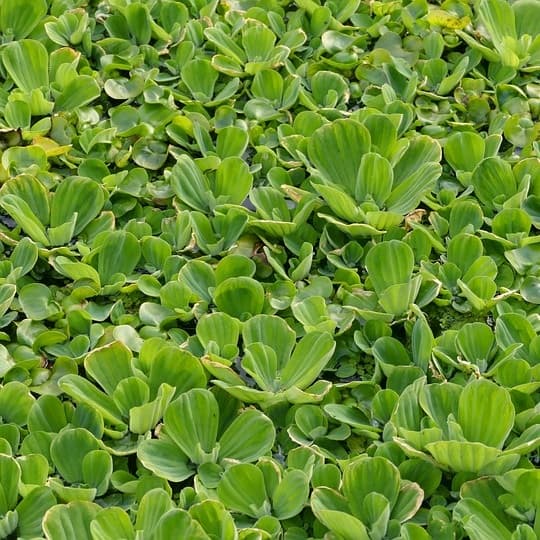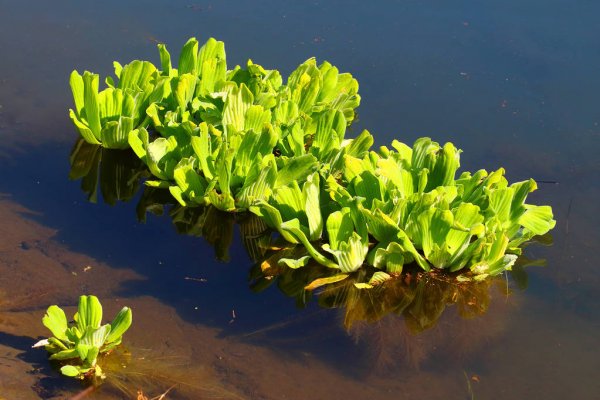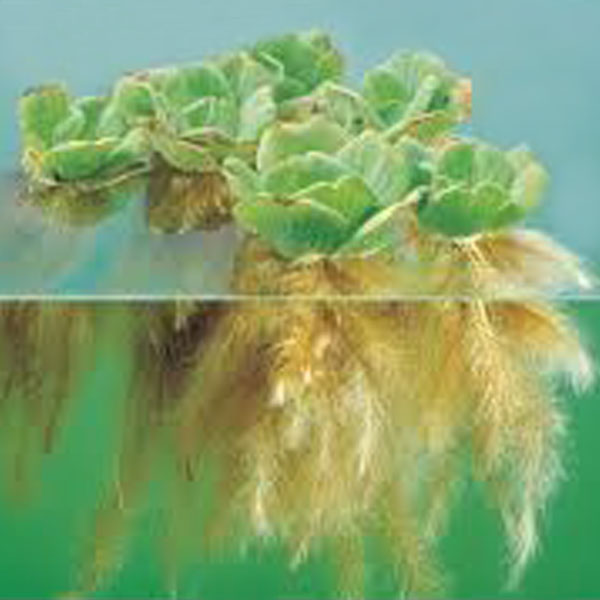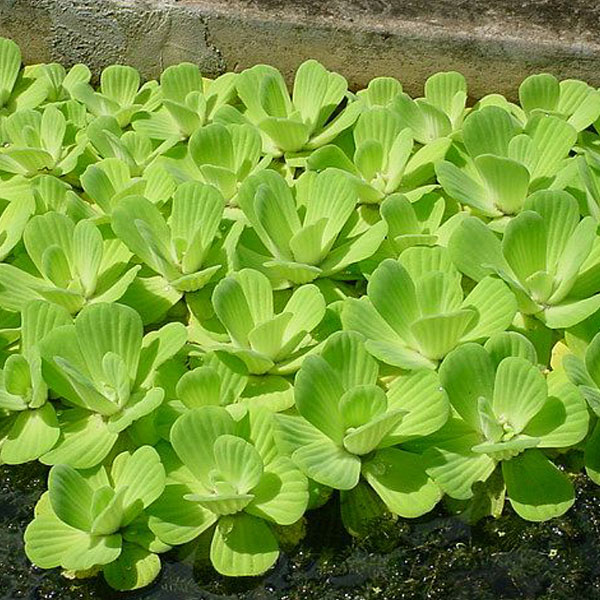Water Lettuce
weed identification
Water Lettuce is a floating herb in rosette of grey-green leaves. Each rosette has numerous roots that can appear feathery. Leaves are often spongey near the base of the rosette and have very obvious parallel veins. One rosette can grow up to 30cm across.
Pistia stratiotes can be found in a variety of aquatic habitats although the general impression is that it prefers relatively stagnant water such as: wetlands, ponds, dams and lakes.
This plant reproduces vegetatively, by developing new plants along its runners (i.e. stolons), and also by seed.
The seeds float and are therefore most commonly dispersed by water. Entire rosettes may also be spread by water and wind movement and by boats. They are also commonly dispersed in dumped aquarium or garden waste.
Pistia stratiotes has often been grown as an ornamental in lakes, ponds, aquaria and gardens. It is often used in tropical aquariums to provide cover for fry and small fish. It has medicinal properties and can be used as fodder for cattle and pigs. It can be beneficial in certain instances as it outcompetes algae for nutrients in the water, thereby preventing massive algal blooms. However, these uses cannot compensate for this plant’s overall negative impacts.
What does Water Lettuce look like?
Disadvantages of Water Lettuce
Full coverage of a pond or dam by Water Lettuce can cause significant problems such as:
- Stopping oxygen diffusion
- Shades out all submerged vegetation preventing further growth and causing death
- Causes fish and other aquatic life death
- Provides breeding ground for mosquitos
- Changes the water chemistry to favour harmful algae and bacteria
- If left untreated, Water Lettuce can render the water unusable and make treatment far more costly than if initially dealt with
treatment
Orange Oil – Designed to treat free-floating organic matter. This treatment is best applied when 20% of the surface water is still visible, and is intended to be used over multiple treatments (day 1, 2 and 4).
AQ200 Aquatic Herbicide + Wetting Agent – Chemical Herbicide designed to kill free floating weeds quickly. Use on mild to severe infestations.
Aquatic Weed Skimmers – Physically remove free floating weeds. Use on mild infestations or to aid herbicide treatments.
Aquatic Harvesting – Large amphibious machine that clears the surface of floating aquatic weeds. Book this service for severe infestations or for larger water bodies.
prevention options
Surface Clear – Creates a protection barrier on the surface of the water to limit plant replication and new infestations forming. Use on its own or after herbicide treatments.
Aerating Fountains – Reduces the severity and likelihood of aquatic weed infestations. Use in any body of water.


